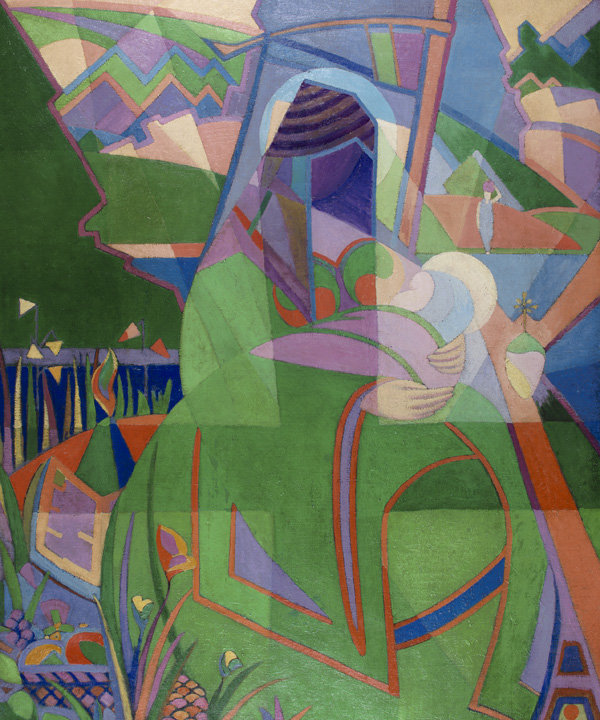
Peace on Earth
Henry Fitch Taylor
A native of Ohio, Taylor went to Paris around 1882 to study at the Académie Julian. While in France he befriended Claude Monet and spent time painting in Giverny. Consequently, Taylor was among the first American artists to show a clear understanding of the principles of Impressionism and he worked the style in his personal way to much success. Taylor was never enamored of the art world and its commercial aspects and in 1898 left New York for Cos Cob, Connecticut which became a well-known destination for artists and writers. During this time he did little painting but benefited from conversations and contact with Arthur B. Davies, Walt Kuhn, and William Glackens. Cos Cob fostered a sense of independence and experimentation which Taylor found liberating and which became a guiding principle for his new work.
Around 1908, Taylor met Clara Potter Davidge, an enthusiastic and well-to-do patron of the arts who he married in 1913. Together they managed the Madison Gallery in New York and hosting progressive exhibitions of recent art. In 1911, Taylor, with fellow artists Kuhn, Jerome Myers and others initiated a series of discussions about the place and issues of American artists. Out of these conversations and debates arose the Association of American Painters and Sculptors. It was this organization that developed the momentous Armory Show of 1913 that introduced American audiences to a broader range of modern art than ever before. Taylor responded with enthusiasm to the contemporary art being made in France and as was the case with his absorption of impressionism, astutely digested the lessons of modernism and through them developed his own theories and style. Not content simply to adopt the palette and form of Matisse and Picasso, Taylor’s work of 1914-18, including Peace on Earth, shows his careful study of Robert Delaunay, Francis Picabia and others who explored the spiritual and scientific capacity of color, a sense of simultaneous time, and monumentality that could compete with historical art. He wrote a treatise on color theory called The Taylor System of Organized Color that, as was the case with Wassily Kandinsky and other theorists of the time, explored the physical and psychological power of color.
Artist
Date of Birth
(1853-1925)
Date
1914
Medium
Oil on canvas
Dimensions
62 x 52 in. (157.48 x 132.08 cm.)
Accession #
2008.5
Credit Line
Henry C. Gibson Fund
Copyright
No known copyright restrictions
Category
Subject
Exhibition
More by
We're so excited you're planning to visit PAFA!
Make time for art — visit us Thursday to Sunday.
Before reserving your tickets, please review helpful information about museum hours, accessibility, building access, and special admission programs.
If you have any questions, feel free to reach out to us at visitorservices@pafa.org — we’d love to help!